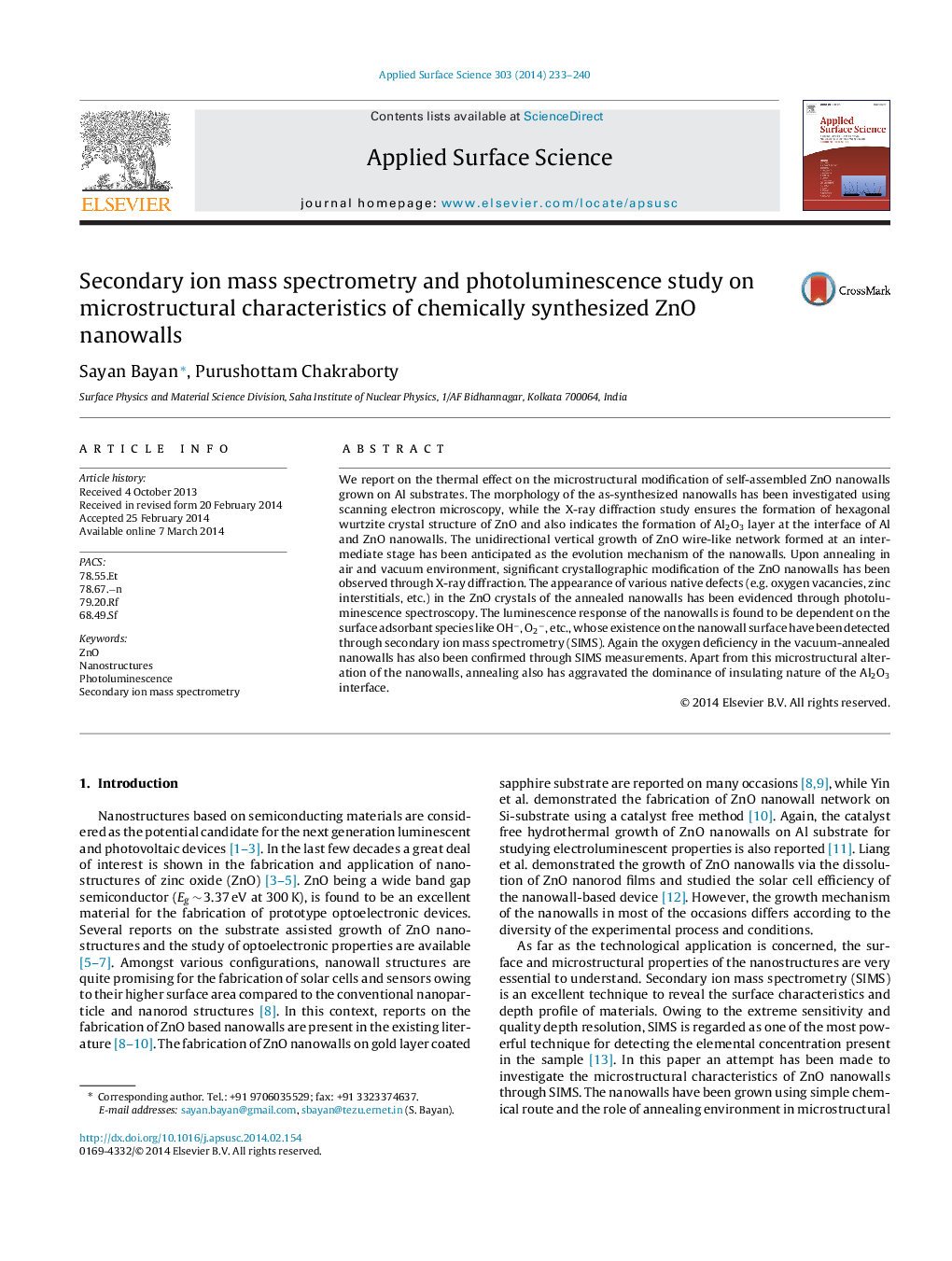| Article ID | Journal | Published Year | Pages | File Type |
|---|---|---|---|---|
| 5359202 | Applied Surface Science | 2014 | 8 Pages |
Abstract
We report on the thermal effect on the microstructural modification of self-assembled ZnO nanowalls grown on Al substrates. The morphology of the as-synthesized nanowalls has been investigated using scanning electron microscopy, while the X-ray diffraction study ensures the formation of hexagonal wurtzite crystal structure of ZnO and also indicates the formation of Al2O3 layer at the interface of Al and ZnO nanowalls. The unidirectional vertical growth of ZnO wire-like network formed at an intermediate stage has been anticipated as the evolution mechanism of the nanowalls. Upon annealing in air and vacuum environment, significant crystallographic modification of the ZnO nanowalls has been observed through X-ray diffraction. The appearance of various native defects (e.g. oxygen vacancies, zinc interstitials, etc.) in the ZnO crystals of the annealed nanowalls has been evidenced through photoluminescence spectroscopy. The luminescence response of the nanowalls is found to be dependent on the surface adsorbant species like OHâ, O2â, etc., whose existence on the nanowall surface have been detected through secondary ion mass spectrometry (SIMS). Again the oxygen deficiency in the vacuum-annealed nanowalls has also been confirmed through SIMS measurements. Apart from this microstructural alteration of the nanowalls, annealing also has aggravated the dominance of insulating nature of the Al2O3 interface.
Keywords
Related Topics
Physical Sciences and Engineering
Chemistry
Physical and Theoretical Chemistry
Authors
Sayan Bayan, Purushottam Chakraborty,
